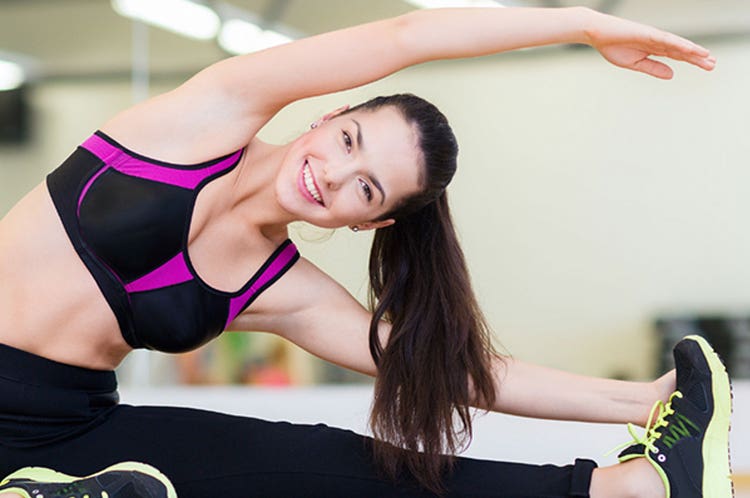Stretch Your Definition of Flexibility

When you think flexibility, images of ballerinas, gymnasts and yogis probably spring to mind. But flexibility isn’t just for those who are, um, bendy. It’s vital to health, performance and longevity for everybody. Doing the splits or getting your foot behind your head make for great party tricks, but everyday flexibility allows us to move well, prevents injuries, and helps us get stronger.
Time to reboot our definition of flexibility, starting with the term itself. Flexibility is the ability to move a joint through its full range-of-motion (ROM). Too much flexibility can lead to unstable joints (a common concern during pregnancy according to a Medscape Women’s Health report. A lack of flexibility can bring pain, lack of movement, and poor joint function.
And there’s more to flexibility than joint movement. Muscle function and connective tissue, which produce stability, turn out to be essential to a joint’s range of motion. You never want to increase flexibility, without stability.
- Your stretch-shorten reflex is the ability of your muscles and connective tissue to lengthen and contract reactively. Jumping is a great example of this reflex in action.
- Static stretching refers to the ability to extend a limb to the end of its range of motion, and holding that position for 15 to 60 seconds. Remember those sit-and-hold moves from soccer practice? Static stretching works by sending an inhibitory signal to the muscle, allowing it to lengthen (or relax). This reduces tightness in muscle tissue, and restores a muscle to its resting length after a workout. But this inhibitory signal also reduces the muscle’s ability to generate strength or power. So static stretching is best done post-workout.
- Your muscles adapt their length to a position when you hold it for an extended period, and that’s called plastic deformation. But thanks to plastic deformation, your muscles also can adapt to a shortened position. That’s what happens to your hip flexor muscles when you sit for long periods. The shortened muscle not only feels tight, but will have limited range of motion and reduced ability to produce force.
Enter dynamic flexibility, which uses controlled movement to take joints through their active range of motion before exercise. It involves moving stretches (think yoga flows) and movements that mimic the workout to follow (say, bodyweight squats before you get into the squat rack). Like any warm up, it increases body temperature and blood flow, but it also gets the brain involved—dynamic movements require intention and focus!
Next week, we’ll play with this new concept of flexibility at the gym, and learn how to use dynamic movement in warm-ups. You’ll also discover that it feels really good.
You’re Dynamic!
Calisthenics and bodyweight exercises like lunges (in all directions), squats, push-ups, high planks, spider-man crawls, and even jumping jacks are all familiar examples of dynamic flexibility movements.